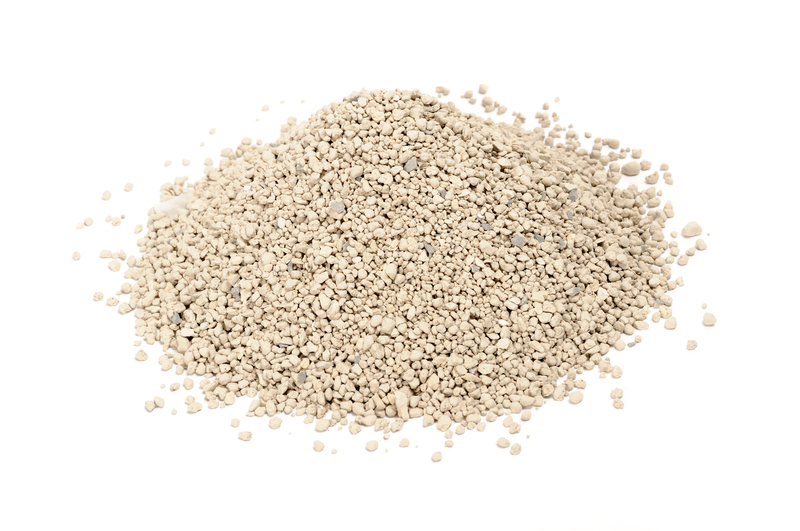Discover Top Techniques for Efficient Window Cleaning
Posted on 28/09/2025
Discover Top Techniques for Efficient Window Cleaning
Clean, sparkling windows can dramatically enhance the beauty and ambiance of your home or business. But achieving that streak-free shine is often more challenging than it looks. Whether you want to tackle routine maintenance or need deep-cleaning solutions, learning the best window cleaning methods can save you time, energy, and even money in the long run.
This comprehensive guide explores the top techniques for efficient window cleaning, recommended tools, eco-friendly solutions, and insider tips to transform your windows from smudged to spotless!

Why Efficient Window Cleaning Matters
Pristine windows do more than just improve curb appeal. Regular, effective window cleaning brings a host of practical benefits, including:
- Enhancing natural light: Clean glass lets in more sunlight, brightening interiors and boosting moods.
- Increasing window longevity: Removing grime, hard water stains, and debris prevents glass etching and damage.
- Improving energy efficiency: Dirt can absorb heat and reduce the insulating capacity of energy-efficient windows.
- Creating a healthier environment: Regularly cleaned windows reduce mold spores and allergens, improving indoor air quality.
Let's dive into the latest techniques and tips for cleaning residential and commercial windows efficiently.
Must-Have Tools for Efficient Window Cleaning
Before starting, gather the right tools for the job. The following items are essential for professional-quality glass cleaning:
- Squeegee: A high-quality squeegee is crucial for streak-free results.
- Microfiber cloths: These trap dirt, leave no lint, and don't scratch glass.
- Bucket: Preferably one that fits your squeegee and is easy to carry up ladders, if needed.
- Scrubber or sponge: Loosens sticky spots and grime.
- Extension pole: Vital for accessing high or large windows safely.
- Good cleaning solution: Choose between commercial glass cleaners, DIY mixtures, or eco-friendly formulas -- more on this below.
- Razor blade scraper: For tough labels or paint splatters (use with extreme care to avoid scratches).
Top Techniques for Spotless Window Glass
1. The Squeegee Method: Fast and Streak-Free
Squeegee cleaning is a staple of professional window washers because it's efficient, effective, and minimizes streaks.
- Wet the glass: Use your washer, sponge, or microfiber cloth soaked in your cleaning solution to loosen dirt.
- Squeegee with skill: Starting at the top, glide the squeegee down the pane in a single, smooth stroke. Wipe the blade with a clean cloth after each pass.
- Overlap strokes: Every new swipe should slightly overlap the previous one to avoid lines.
- Detail and polish: Use a dry microfiber cloth to wipe the window's edges and corners, ensuring all drips are removed.
Pro tip: For large glass panes, work from one side to the other in a reverse-S pattern for maximum coverage.
2. The Microfiber Magic: Quick, Chemical-Free Cleaning
For quick touch-ups or allergy sufferers, simply use clean, damp microfiber cloths. They lift and trap dust, pollen, and greasy fingerprints without leaving fibers behind.
- Dampen and wipe: Slightly wet one cloth with distilled water, wipe the window, then buff dry with a second, dry cloth.
- Great for sensitive glass: Microfiber minimizes scratching on delicate or tint-coated windows.
- Eco-friendly: No harsh chemicals required!
3. The Traditional Bucket and Sponge
Sometimes, you can't beat the classics. If it's been months since your last clean or the windows are extra grimy:
- Mix your solution: Combine warm water with a small squirt of dishwashing liquid. For seriously dirty or greasy glass, add a splash of white vinegar or ammonia-free glass cleaner.
- Sponge thoroughly: Work the solution into all corners and edges, focusing on problem spots.
- Squeegee or cloth dry: Don't air dry -- that leads to spots! Always finish with a squeegee or lint-free cloth.
4. Cleaning Windows with Vinegar: An Eco-Friendly Approach
For those who prefer natural cleaning products, distilled white vinegar is a safe, effective alternative.
- DIY solution: Mix equal parts distilled water and vinegar in a spray bottle. For tough dirt, use less water and more vinegar.
- Spray and wipe: Mist the glass, let it sit for a few minutes, then wipe with a microfiber cloth or squeegee.
- No residue: Vinegar breaks down mineral deposits, ideal for tackling hard water stains.
5. Tackling Window Screens and Tracks
- Remove and rinse screens: Take screens outside, gently scrub with soap and water, rinse thoroughly, and leave to dry before replacing.
- Vacuum tracks: Use a narrow vacuum attachment to suck up debris, then clean with a damp cloth or brush.
- Lubricate moving parts: Finish with a small amount of silicone lubricant for smooth sliding windows.
Advanced Tips for Hard-to-Clean Windows
Dealing with Hard Water Stains and Mineral Deposits
Hard water can leave cloudy spots that ordinary cleaners won't touch. To restore glass clarity:
- Vinegar and baking soda paste: Spread the paste over spots, let it fizz for a few minutes, then rinse and buff dry.
- Commercial mineral deposit removers: Especially for stubborn stains. Always follow the manufacturer's instructions and test an inconspicuous area first.
- Prevention: Squeegee windows after rain and avoid watering plants near windows to reduce future buildup.
Safe Methods for Cleaning High or Exterior Windows
Exterior or second-story windows may seem intimidating, but there are safe, efficient ways to reach and clean them:
- Extension poles: Attach your squeegee and scrubber to a telescoping pole for high windows.
- Hose attachment tools: Some cleaning tools connect directly to garden hoses for soaping up and rinsing large exterior panes from the ground.
- Safety first: Use a stable ladder with a spotter if necessary. Never overreach or lean out unsafe distances!
- Professional window cleaning services: For taller buildings, heavily soiled glass, or hard-to-access areas, professionals have the gear and expertise to get the job done safely and efficiently.
Pro-Level Secrets for Absolutely Streak-Free Windows
If you're striving for that "just professionally cleaned" look, these expert window cleaning tricks can make all the difference:
- Use distilled water: Tap water contains minerals that contribute to streaks. Distilled or deionized water leaves windows spotless.
- Work in shade or on cloudy days: Sun can cause cleaner to dry too quickly, leaving residue behind.
- Change your solutions and cloths frequently: Dirty water makes dirty windows. Keep your tools clean.
- Wipe frames and sills: Remove excess water and cleaning solution to prevent wood rot and paint damage.
- Buff with newspaper: Some swear by finishing with crumpled newspaper for a final polish without lint or streaks.
Best Cleaning Solutions for Windows: Eco-Friendly vs. Commercial Products
Choosing the right window cleaning solution makes a huge difference in your final results. Here's how natural and commercial options stack up:
Eco-Friendly Window Cleaning Mixtures
- White vinegar & water: As noted above, this is a powerhouse for cutting grease and dissolving residue.
- Lemon juice: Natural acidity makes it good for moderately dirty glass.
- Cornstarch: Mix with water for a gentle abrasive that lifts grime without scratching.
Commercial Glass Cleaners
- Spray-on cleaners: These are convenient, fast-acting, and often contain surfactants that help prevent re-soiling.
- Concentrates: Professional-grade formulas yield excellent results but should be diluted as directed for safety.
- Avoid ammonia on tinted windows: Ammonia-based cleaners can damage certain window films and vinyl.
Ultimately, the best glass cleaning solution is the one that works for both your budget and environmental values -- and that tackles the specific dirt or stains on your windows.
Routine Maintenance: Keeping Windows Clean Year-Round
To preserve that gleaming, clear view as long as possible, include these easy habits in your regular cleaning schedule:
- Dust blinds and curtains: Keeping window coverings clean reduces how much dust ends up on the glass.
- Wipe sills and tracks often: Catching spills and dirt early prevents gunk from building up and damaging seals.
- Spot clean fingerprints: Don't wait for scheduled cleaning; use a damp microfiber cloth on smudges as they appear.
- Seasonal deep cleaning: Clean all sides of the glass, frames, tracks, and screens at least twice a year; spring and autumn are perfect times.

Most Frequently Asked Questions: Expert Window Cleaning Advice
How often should I clean my windows?
- Residential homes: Every 3-6 months for exteriors, more often in high-traffic rooms like kitchens and playrooms.
- Businesses or storefronts: Monthly or even weekly, depending on visibility and location.
What's the best way to avoid streaks on windows?
- Work with a squeegee, wipe after every pass, and avoid cleaning in direct sunlight.
- Use distilled water for your solution.
- Buff with a lint-free cloth for a final polish.
Can I clean windows with just water?
- For light dust, yes -- but for grease, fingerprints or hard water marks, a proper glass cleaner or vinegar solution is best.
Is it safe to use razor blades on window glass?
- CAUTION: Only use new razor blades, held flat to the glass, and never on tempered, coated, or tinted windows. Pre-soak sticky spots and scrape very gently.
Conclusion: Achieve Crystal-Clear Results Every Time!
Mastering the top techniques for efficient window cleaning can completely transform your home or workspace. By combining the right tools, proven cleaning methods, and routine maintenance, you'll enjoy gleaming, streak-free glass that welcomes in more sunlight and reveals the beauty of your surroundings.
Whether you choose natural cleaners, professional products, or a blend of the best, the keys to success are the same: consistency, high-quality materials, and careful attention to detail. Happy cleaning!
Did we miss your favorite window cleaning trick? Share your best tip for sparkling glass in the comments below!





